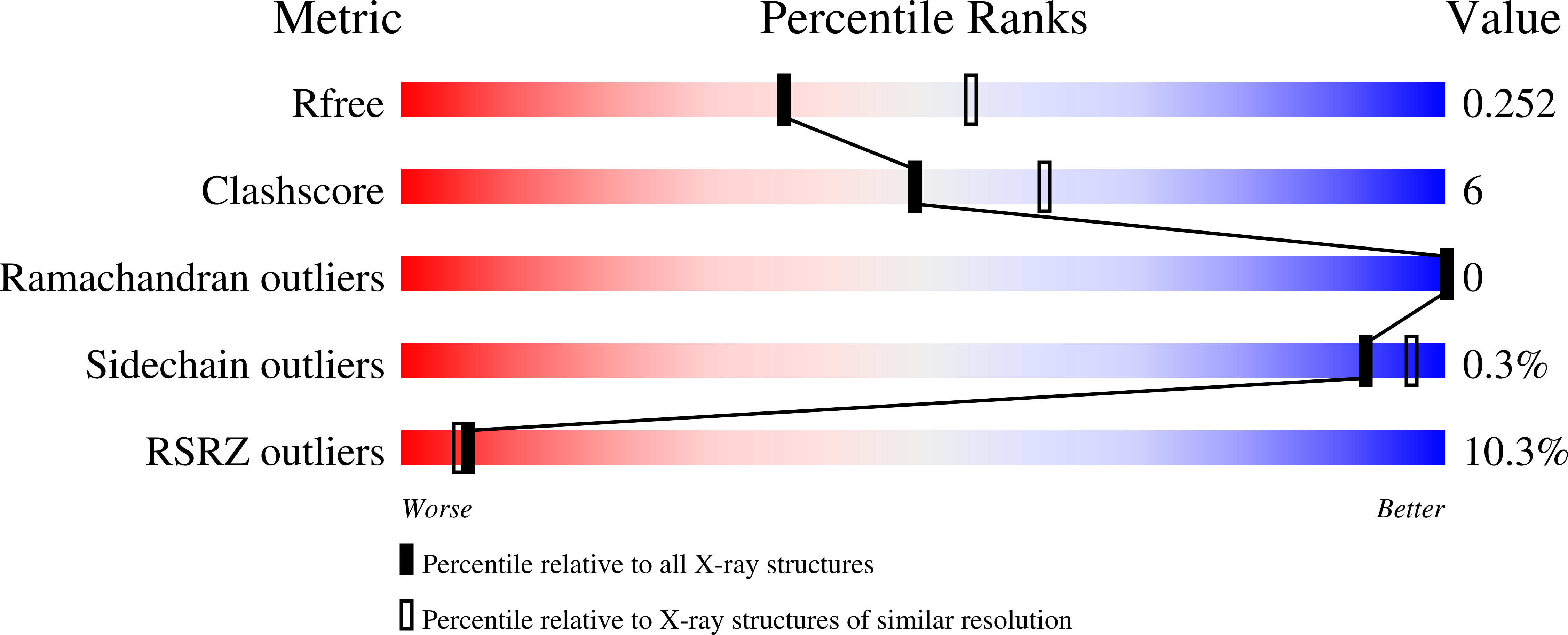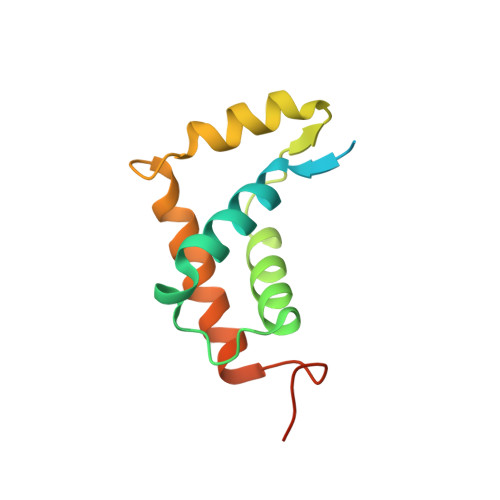Structural characterization of the late competence protein ComFB from Bacillus subtilis.
Sysoeva, T.A., Bane, L.B., Xiao, D.Y., Bose, B., Chilton, S.S., Gaudet, R., Burton, B.M.(2015) Biosci Rep 35
- PubMed: 25423369
- DOI: https://doi.org/10.1042/BSR20140174
- Primary Citation of Related Structures:
4WAI - PubMed Abstract:
Many bacteria take up DNA from their environment as part of the process of natural transformation. DNA uptake allows microorganisms to gain genetic diversity and can lead to the spread of antibiotic resistance or virulence genes within a microbial population. Development of genetic competence (Com) in Bacillus subtilis is a highly regulated process that culminates in expression of several late competence genes and formation of the DNA uptake apparatus. The late competence operon comF encodes a small protein of unknown function, ComFB. To gain insight into the function of ComFB, we determined its 3D structure via X-ray crystallography. ComFB is a dimer and each subunit consists of four α-helices connected by short loops and one extended β-strand-like stretch. Each subunit contains one zinc-binding site formed by four cysteines, which are unusually spaced in the primary sequence. Using structure- and bioinformatics-guided substitutions we analyzed the inter-subunit interface of the ComFB dimer. Based on these analyses, we conclude that ComFB is an obligate dimer. We also characterized ComFB in vivo and found that this protein is produced in competent cells and is localized to the cytosol. Consistent with previous reports, we showed that deletion of ComFB does not affect DNA uptake function. Combining our results, we conclude that ComFB is unlikely to be a part of the DNA uptake machinery under tested conditions and instead may have a regulatory function.
Organizational Affiliation:
*Department of Molecular and Cellular Biology, Harvard University, Cambridge, MA 02138, U.S.A.















